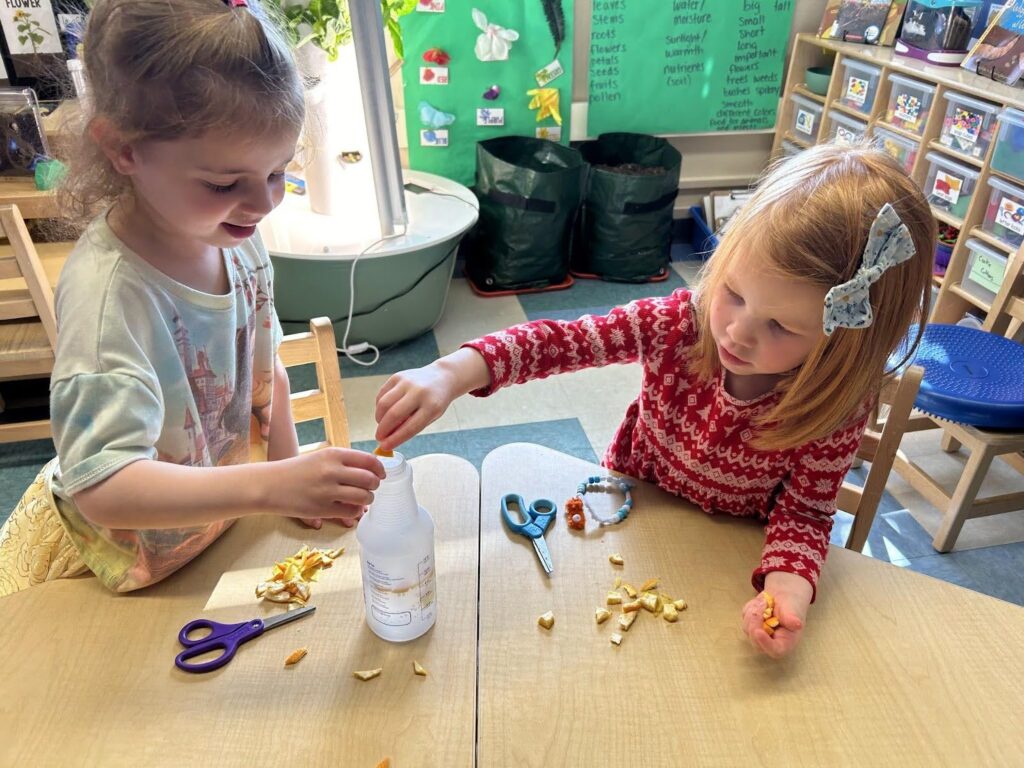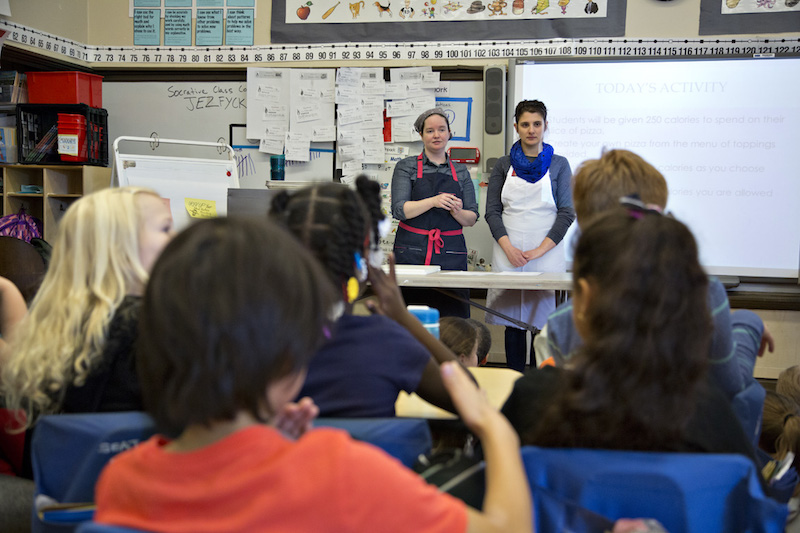Food advocacy for students is an important part of comprehensive Food Education. FES 7 is about students’ ability to advocate for changes to the food systems they belong to, including local, national, and global.
This Standard Means
- We can affect change by identifying issues, figuring out solutions, building community, and taking action.
- Prioritizing inquiry into the complex issues within our food systems can help us to take action.
- Young people can build an equitable food future that is their own.
- Our modern food system exists at the intersection of many inequities and environmental strains which can be improved by active and engaged agents of change.
- Students who demonstrate understanding can design, describe, and/or implement action plans for sharing awareness of food equity and food systems with others.
The Standard In Action
“I loved implementing the agriculture education and advocacy project. One of the big successes was really students being able to understand how they are connected to their food systems, and also how food connects students to one another, community, and the world.”
-Pilot Light Educator Kitty Ma, Chicago, IL
 Advocating for & Making Change
Advocating for & Making Change
PreK students in Chicago learned how to advocate for less food waste and easy ways to reduce their own waste by using leftover citrus peels to make a natural cleaning solution. “They were so excited to try it out and even cleaned the WHOLE room!,” their teacher, Pilot Light Fellow Mrs. Russell, said.
How to bring FES 7 to your students
Try these examples of real-world community experiences with your students aged K-12 to help them understand the importance of food advocacy in their daily lives!
- Organize a food drive for a local food pantry.
- Research the school lunch menu for a week and create advertisements to promote the options available at school.
- Write a letter to thank the workers at a local grocery store, bodega, market, or farm.
- Develop a school advocacy project about nutritional information of school-provided lunches using resources such as the school cafeteria manager, the USDA and FDA websites, and federal nutrition programs.
- Produce informational posters, flyers or pamphlets sharing information about a food advocacy project (e.g., running a food drive with a local food pantry within the larger school community).
- Prepare a grocery list for the family that supports nutrient-dense food choices.
- Create a meal from local foods to share with the community outside of school.
- Develop an advocacy project to bring awareness about food deserts within the surrounding communities.
- Visit a food awareness coalition, food pantry, and/or invite food pantry workers to speak about their work, the role of food pantries in communities and their history, as well as community food access and availability.
- Take a field trip to local grocery stores to analyze the available foods, using phones or cameras to take pictures as photovoice that might demonstrate instances of food disparities (e.g., finding evidence that there are more candy options available than, say, fruit and vegetable options).
- Write letters to or submit articles advocating for a specific food policy change to school, college, or local newspapers, and/or local politicians.
- Research a local food inequity issue, and present findings to the school community or the broader community.
- Using reputable sources, research a food policy and related stakeholders that have an impact on the school or local community.
Find FREE food advocacy project templates on Pilot Light’s Food Education Center!
Grade-Specific Competencies
- I know that in a community, people share things with each other.
Play-Based Activities
- Dramatic play: incorporate materials for a pretend garden
- Vote on a new fruit or vegetable to try for snack
- Encourage children to bring in a favorite fruit or vegetable for show and tell
- Make a class book of recommendations for a fruit or vegetable that each child likes, and share the book with your school community
- Schedule a series of family shares so that each child can share about a food that is important in their family
- Cook stone soup together, or with a buddy class!
- As a class, bake something to give to others at your school (another class, the office staff, the cafeteria staff, etc.)
- Create a class cookbook
- Help clean up in the cafeteria after lunch one day
- Help collect cans of food
- Invite the cafeteria staff to your classroom to share a snack
Grade-Specific Competencies
- I can describe food in equitable terms (e.g. all people need food access, clean water is necessary, grocery stores are important to communities and their health).
- I can explain how I make food choices when I am presented with options.
- I can talk about where my family gets our food.
Grade-Specific Competencies
- I want to know how to make food decisions with others who may have different opinions from me.
- I can talk about food equity within the context of my school and broader communities.
- I understand that I have agency that I can use to be an advocate for change in food systems.
Grade-Specific Competencies
- I can talk about different health issues that are associated with nutritional deficiencies around the world.
- I understand how social and environmental factors interact to create food inequity.
- I can use what I have learned about our food systems and take action around food issues that are important to me.
Grade-Specific Competencies
- I can explain the importance of inquiry into big issues and using my voice to create change.
- I want to know more about how food systems work on a global scale.
- I want to know more about ways to get involved with volunteering, action, and advocacy to promote food equity.

